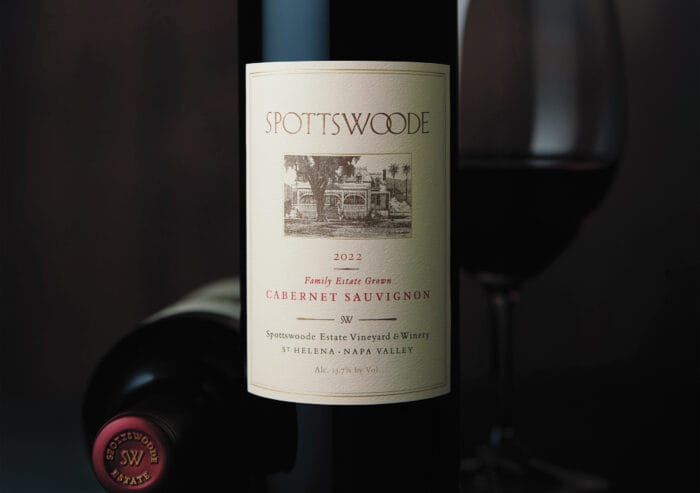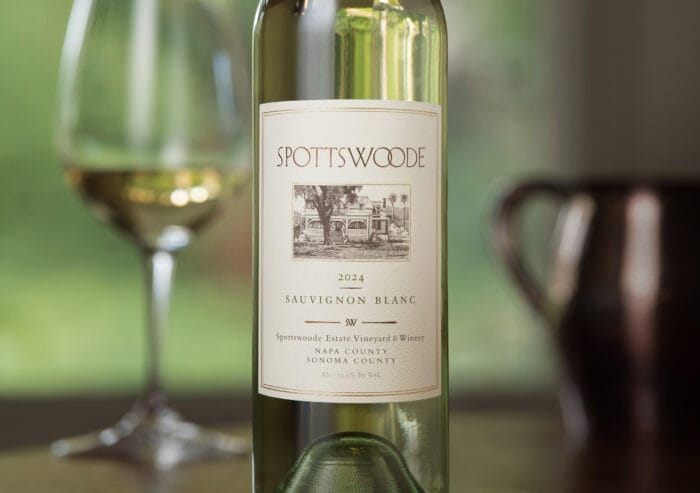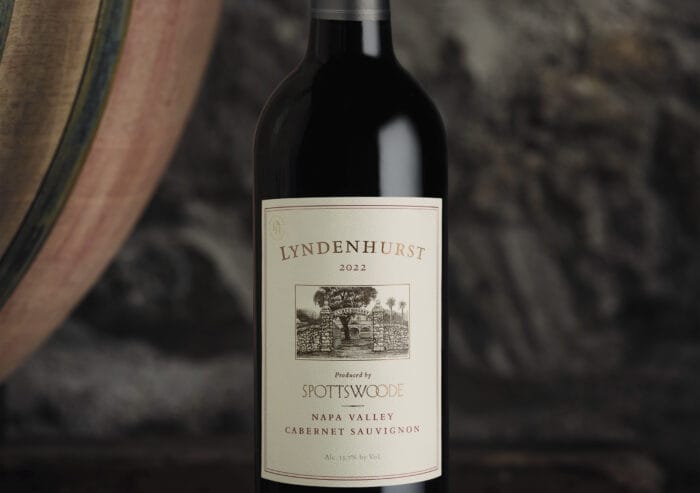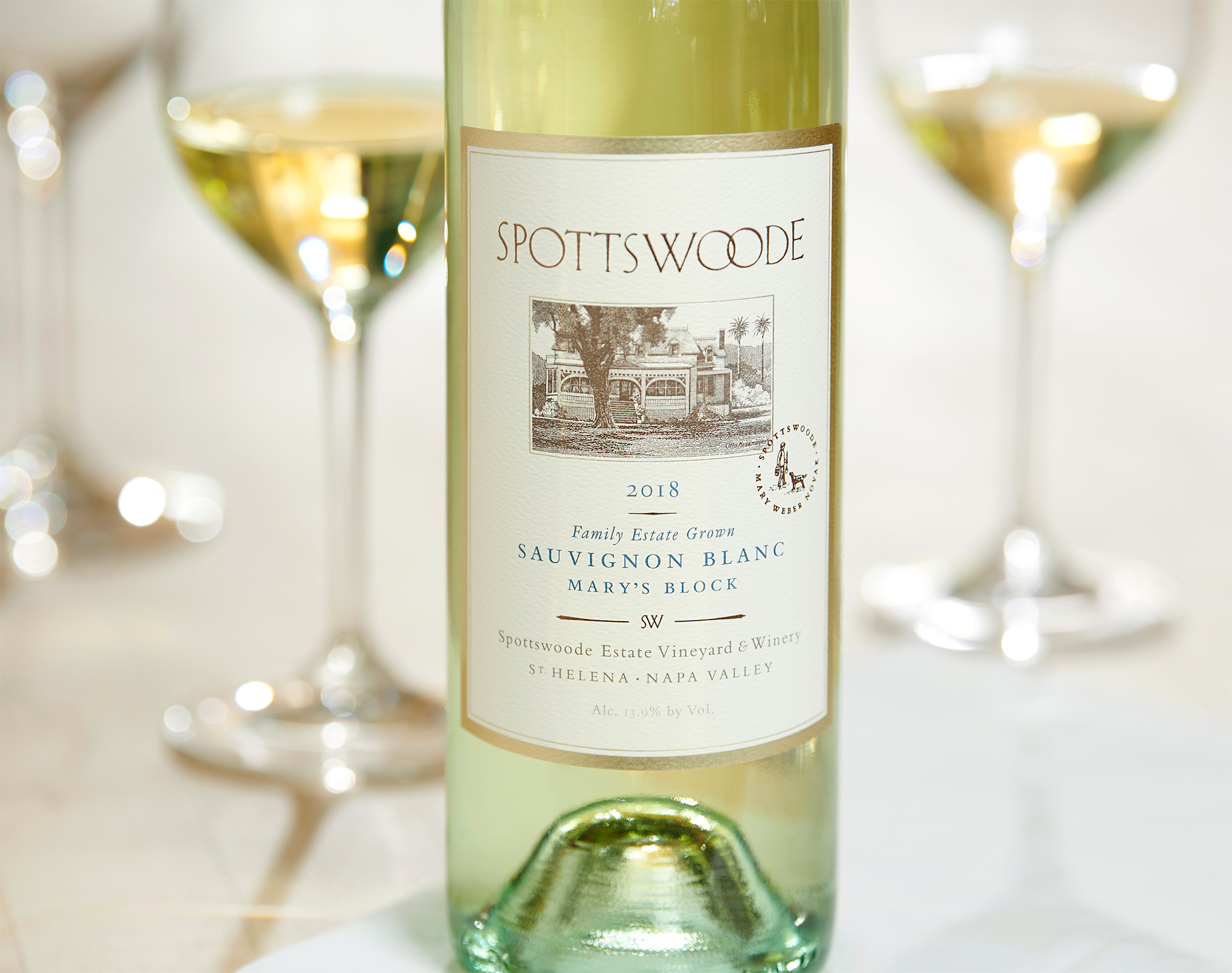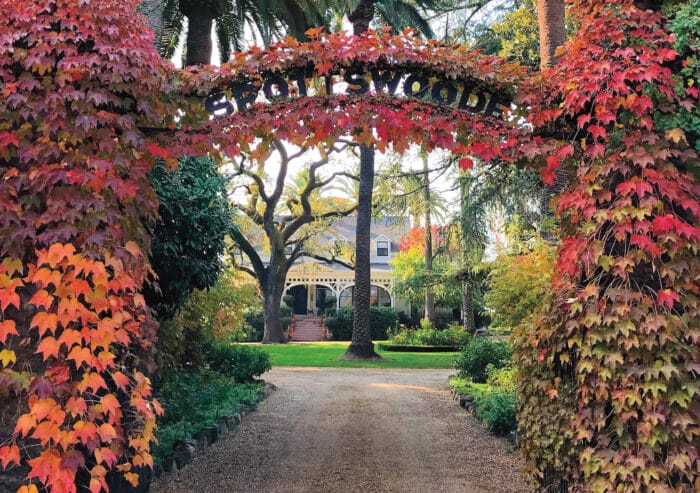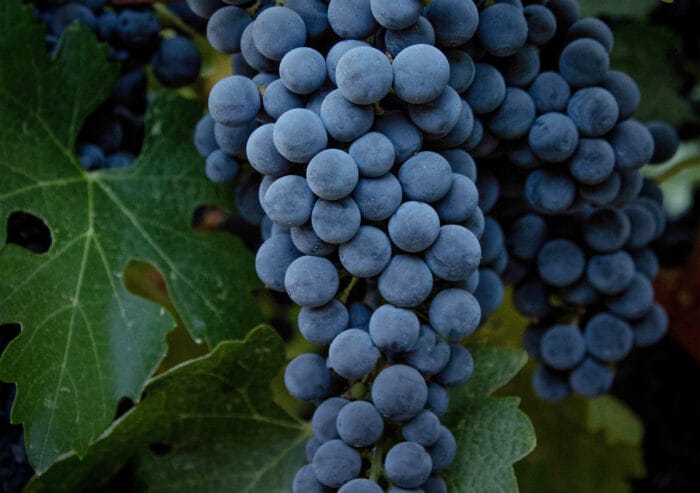Accolades
Robert Parker Vertical Tasting
The Wine Advocate
August 30, 2016
USA, California: Spottswoode – A Vertical Tasting of One of Napa Valley’s First-Growth Wines and Vineyards
Spottswoode is a monopole vineyard, completely owned by the Novak family, who purchased it in 1972 and have managed it with the inspired leadership of Mary Novak and the rest of the family. Beth Weber Novak is the face and strong operating presence of Spottswoode. The vineyard sits on the western edge of St. Helena, behind the small town at what is basically the foothills of the Mayacamas Mountains. Right across the street is David Abreu’s Madrona Vineyard, and nearby are other extraordinary first-growth quality vineyards, such as the Dr. Crane and Hayne vineyards.
The entire single block consists of alluvial/clay/loamy soils from what was once a river bed. Their 40 acres (37 in vineyards) are contiguous and broken into 22 blocks, with the oldest vines planted in 1991 when they began to replace the phylloxera-infected vineyard blocks planted on AXR1 rootstock. Spottswoode has been farmed organically since 1985, well ahead of the current trend for organic and biodynamic farming.
This tasting, which took place in August 2016, was a phenomenal look at what is truly a Napa first-growth estate. I broke the tasting notes into the different eras marked by their brilliant winemakers, starting with Tony Soter, and moving through a series of prominent women winemakers: Mia Klein, Pam Starr, Rosemary Cakebread and Jennifer Williams. For the last four vintages in the vertical, the winemaker has been Aron Weinkauf.
It is amazing that the alcohols have rarely surpassed 14.4%, with the highest at 14.7% in 2002, but generally in the 13.9%–14.4% range across the board with all of the early vintages (when the AXR1 rootstock was still viable) coming in at less than 14% alcohol. Prices are striking to follow, which mirror what has happened with the top wines in California. The debut 1982 vintage was priced at $18, by 1994 the price had risen to $45, then jumped to $80 in 1998, $110 in 2002 and to its current price of $185 in 2014.
This is a wine of great classicism and quality with enormous aging potential, as the following tasting notes illustrate. Certainly one of the privileges in my profession is to have a winery present their entire, lifetime of work. This was one of the more fascinating and enjoyable tastings to which I have had the honor of being invited.
PART V: 2011–2014
Aron Weinkauf Carries on the Tradition
2014 Spottswoode Estate Cabernet Sauvignon 96+ Points*
The last wine in the vertical, the 2014, had been bottled two weeks before I tasted it, and it is the highest production year for Spottswoode (4,922 cases), since the 5,713 cases made in 1992 and the 5,852 produced in 1991. The wine is a blend of 86% Cabernet Sauvignon, 10% Cabernet Franc and 4% Petit Verdot. This wine shows oodles of fruit, blackcurrants, blueberries, black raspberries, charcoal, subtle oak and a full-bodied, inky, intense mouthfeel with a boatload of tannin, but the fruit is present to balance it out. This wine needs another several years of bottle age and, while not up to the levels of 2012 and 2013, it is a highly successful effort and capable of lasting 30–35 more years. Drink 2019–2054. (*Rating amended per Mr. Parker’s review dated Dec. 2016.)
2013 Spottswoode Estate Cabernet Sauvignon 99+ Points
Yields continued to increase in 2013, with just over 4,000 cases of wine from a blend of 88% Cabernet Sauvignon, 8% Cabernet Franc and 4% Petit Verdot. This is another killer effort from Spottswoode. Inky bluish purple to the rim, it has hints of violets intermixed with sweet foresty notes, blackcurrants, chocolate and a touch of subtle smoke and earth. It is dense, with higher acidity and more noticeable structure than the 2012, but is as concentrated, dense and promising. Some patience is warranted in 2013, and I would suggest waiting another 5–6 years before pulling the cork on one. It is a 50-year wine at the very minimum and a great classic. Drink 2021–2071.
2012 Spottswoode Estate Cabernet Sauvignon 99 Points
With the lowest percentage of Cabernet Sauvignon in of any of the wines from this vertical, the 2012 final blend was 85% Cabernet Sauvignon, 10% Cabernet Franc and 5% Petit Verdot. Production across the board in 2012 was high, and reflected in the 3,977 cases made at Spottswoode. This is a dramatic, flamboyant, modern-day version of the 2002. Dramatic blueberry, black raspberry and blackcurrant fruit, along with camphor, charcoal, white flowers and foresty notes all emerge from the impressive aromatics that soar from the glass. The intense, explosively rich, full-bodied palate is layered with beautiful purity, stunningly sweet, silky tannins and terrific presence and complexity. This is a gorgeous wine on a relatively fast evolutionary track, I suspect, but certainly it has 30 years of upside left. Drink 2016–2046.
2011 Spottswoode Estate Cabernet Sauvignon 94 Points
New winemaker Aron Weinkauf started in a vintage that has been excessively maligned, despite evidence of very strong efforts produced in the 2011 vintage, including the 2011 Spottswoode, which is a blend of 89% Cabernet Sauvignon, 8% Cabernet Franc and 3% Petit Verdot. Nearly 3,300 cases were produced. As the complete younger vines began producing at full-throttle, the wine offers up loads of blueberry and blackcurrant fruit, is a trifle more compact than the 2010 or for that matter the 2012, 2013 or 2014. It shows admirable purity, plenty of floral blackcurrants that this property is known for and beautiful texture in a medium to full-bodied style. Rain at harvest seems to have had no impact on the quality of this wine. It probably won’t be as long-lived as some of the exceptional years, but it is certainly set for another 20 years of deliciousness. Drink 2016–2036.
PART IV: 2006–2010
The Jennifer Williams Era
2010 Spottswoode Estate Cabernet Sauvignon 100 Points
Production in this cooler year than 2009 produced 2,586 cases and the blend was 92% Cabernet Sauvignon, 6% Cabernet Franc and 2% Petit Verdot. Consistently perfect from barrel and bottle multiple times, the 2010 is one of the recent blockbuster efforts from Spottswoode. Superb aromatics of spring flowers, blue and black fruits, forest floor and a touch of toast, are followed by a wine of exceptional intensity, texture, purity and a full-bodied finish with velvety, but noticeable tannins. This is still extremely young, but also remarkably impressive even though it is only six years of age. Expect this to hit its prime in about 10 years and last for at least 40. Drink 2016–2056.
2009 Spottswoode Estate Cabernet Sauvignon 96+ Points
In 2009, a hot vintage produced low-acid grapes, while production jumped to 2,748 cases. The wine was a blend of 95% Cabernet Sauvignon and 4% Cabernet Franc and, for the first time, 1% Petit Verdot. The wine has an opaque purple color, a big, sweet kiss of blueberries and blackberries with charcoal embers, forest floor and a floral note. It is full-bodied, classic and rich with still-moderate tannins in the finish. The wine is still in its infantile stages, besides being seven years of age and probably won’t hit its prime for at least another 5–10 years. It has at least 30 or more years of aging ahead of it. Drink 2016–2046.
2008 Spottswoode Estate Cabernet Sauvignon 94 Points
A small crop of 1,953 cases and a final blend of 92% Cabernet Sauvignon and 8% Cabernet Franc emerged from the 2008 vintage, that was known for the damaging fires north of Napa and Sonoma that caused smoke damage to Chardonnay and Pinot Noir vineyards in Anderson Valley and sites on the Sonoma Coast. The wine from Spottswoode is pure and rich with deep ruby/purple color, a touch of blackcurrants and floral notes, a medium to full body, slightly chunkier and less profound than the 2007, but still another top-notch effort from this first-growth terroir. It should continue to drink well for another 15–20 years. Drink 2016–2036.
2007 Spottswoode Estate Cabernet Sauvignon 99 Points
In 2007, there was another small crop with only 1,700+ cases produced, from a blend of 97% Cabernet Sauvignon and 3% Cabernet Franc. An absolutely staggering nose of blueberries, white flowers, crème de cassis, licorice and graphite is followed by a full-bodied, opulent, multidimensional wine that is seamless. Incredible fruit intensity, purity and depth of character make this one of the great, great classics in the Spottswoode lineup. This wine can be approached now, but it is nowhere near full maturity, and should evolve for at least another 30–40+ years. Owners of this vintage have liquid gold in their cellars. Drink 2016–2056.
2006 Spottswoode Estate Cabernet Sauvignon 96 Points
The first vintage for Jennifer Williams, 2006, was a low-crop year, with only 2,743 cases produced. The final blend harkens back to the first two vintages of Spottswoode, in being almost 100% Cabernet Sauvignon (1.5% Cabernet Franc with the rest Cabernet Sauvignon). This wine is flowery with terrific fruit intensity and classic Spottswoode elegance and purity. Deep ruby/purple color, youthfulness still to this day and plenty of breadth, depth and richness. An underrated vintage, sandwiched between 2005 and another great one, 2007, this is a sleeper year and a beautiful wine that should drink well at least for another 20–25 years. Drink 2016–2041.
PART III: 1997–2005
The Rosemary Cakebread Vintages
2005 Spottswoode Estate Cabernet Sauvignon 98+ Points
Production more than doubled with the 2005 vintage, given the normal flowering and weather conditions. Moreover, it was a relatively cool year and an abundant one at that, with just short of 3,900 cases produced. The blend was 95% Cabernet Sauvignon and 5% Cabernet Franc. This was the last vintage during the era of Rosemary Cakebread, who left Spottswoode to pursue building her own portfolio of wine. This is a reserved, but classic Spottswoode. An inky bluish purple color, notes of vanillin, white flowers, blackcurrants and blueberries are all present in this dense, rich, full-bodied wine that seems to go from strength to strength. This was a vintage across the board that I underrated, but I have seen how the wines have seemingly put on weight, complexity and density as they have evolved in bottle. This is a beauty and certainly one of the great recent Spottswoodes. It will continue to drink well for 20–30 more years. Drink 2016–2046.
2004 Spottswoode Estate Cabernet Sauvignon 96 Points
One has to go back to 1984 to find as tiny a crop for Spottswoode as the 2004. The extreme heat and subsequent early harvest caused some problems that year, but the quality was extremely high, although there wasn’t much of it—only 1,532 cases were made. The wine, a blend of 97% Cabernet Sauvignon and 3% Cabernet Franc came in at 14.4% natural alcohol. The wine is spectacular and falls right into my observations when I did the 2004 Northern California retrospective several years ago. Only 30% of the crop was actually used in this extremely hot vintage. Loads of big, sweet, floral-infused blackberry and cassis fruit are present in this wine, which is multidimensional, has magnificent intensity, terrific unctuousness, in a very Château Margaux style, despite the conditions under which is was produced. There is an elegance and fragrance, yet power allied to full body that is striking. This wine, while on a relatively rapid evolutionary track, should hit its peak in another 3–5 years and last 20–25. Drink 2019–2044.
2003 Spottswoode Estate Cabernet Sauvignon 95 Points
In 2003, production jumped up to 3,700 cases, with the blend identical to so many other vintages with 96% Cabernet Sauvignon and 4% Cabernet Franc. This was a year where there was some freaky heat spells, but this wine has come through nicely. Deep bluish purple with notes of blackberry and cassis and charcoal followed by a soft, velvety textured, opulent and full-bodied wine that seems to be approaching full maturity. It is interesting, this wine is far more evolved, and on a faster evolutionary track than the 2001 or 2002. Nevertheless it is a beauty, loaded, layered and impressive. It must be one of the top 2003s. Drink it over the next 20-some years. Drink 2016–2036.
2002 Spottswoode Estate Cabernet Sauvignon 100 Points
In 2002 very small yields produced only about 3,000 cases at 14.7% natural alcohol and a blend of 94% Cabernet Sauvignon and 6% Cabernet Franc. This wine is going from strength to strength since I first tasted it prior to bottling. Now a perfect wine, the incredible perfume of blueberries, black raspberries and cassis, along with white flowers and camphor is extraordinarily fragrant and intense. That is easily matched by the magnificent full-bodied richness and compellingly layered mouthfeel of this wine that is rich, full-bodied and a still youthful vintage that remains capable of another 25–30 years of cellaring. This is a dramatic vintage for Napa Valley Cabernet Sauvignon, and it is always fascinating to taste a top winery’s 2001 and 2002 next to each other because they are both such great years. However, the 2002s tend to be the more flamboyant wines, and the 2001s the more structured and broodingly backward. Drink 2016–2046.
2001 Spottswoode Estate Cabernet Sauvignon 98+ Points
Production fell back to about 4,300 cases in 2001, which was a fabulous growing season in Napa Valley and from the get-go heralded as a profound vintage. Certainly Spottswoode hit all cylinders with its blend of 95% Cabernet Sauvignon and 5% Cabernet Franc, and the first in a series of wines from them that eclipsed 14% alcohol (this one is 14.1%). Still dense purple to the rim, the wine is a young adolescent, with beautiful floral notes intermixed with deep crème de cassis, blackberry and blueberry Hints of licorice and graphite also present in this full-bodied, multilayered, magnificent and majestic Cabernet Sauvignon that is shaping up to be a great classic. There is at least 25–30 years of tasty longevity left in this large-scale Spottswoode that still seems to have a vague resemblance to Château Margaux. Bravo! Drink 2016–2046.
2000 Spottswoode Estate Cabernet Sauvignon 93 Points
In 2000, Rosemary Cakebread was still in charge, and production soared to more than 5,000 cases for the first time since 1992. This was a challenging vintage in California, but this wine is a real sleeper of that year and certainly one of the vintage’s strongest efforts. This was the first wine made entirely at the new Spottswoode Winery. The blend was identical to so many of the Spottswoode wines: 94% Cabernet Sauvignon and 6% Cabernet Franc. Exotic, rich, blue and black fruits soar from the glass of this wine that seems open-knit, velvety textured and not terribly structured, but possessing beautiful fruit and fragrance. It is a sleeper selection and a beauty of medium body to drink over the next 7–8 years. Drink 2016–2024.
1999 Spottswoode Estate Cabernet Sauvignon 90+ Points
In 1999 production fell below 4,000 cases, but the blend stayed the same: 95% Cabernet Sauvignon and 5% Cabernet Franc. This is a vintage that has always been tightly structured, with plenty of tannin and acidity. The 1999 Spottswoode exhibited that firmness and slight austerity with notes of black olive, cassis, dark cherries and chocolate in a tannic, earthy, spicy, medium-bodied style that still doesn’t seem to have hit its plateau of maturity. Give it another 4–5 years, but I am wondering, as I have with many 1999s, are they ever going to achieve the full potential that was predicted in their youth? Drink 2016–2021.
1998 Spottswoode Estate Cabernet Sauvignon 91 Points
1998 produced a smaller crop (4,300 cases), but was an identical blend of 95% Cabernet Sauvignon and 5% Cabernet Franc. The wine, like the 1997, was made at the Napa Wine Company, right before the Spottswoode Winery was completed. It exhibited no signs of greenness, despite the fact that it was a cool year with most of the heat coming at the end of the season. Notes of black and red currants, cedar wood, graphite and spice box are all present in this surprisingly strong 1998 that seems to have hit its plateau of full maturity. For that reason, it is probably best consumed over the next 7–8 years to take advantage of the delicious fruit that it has, although there is not the depth of structure and intensity of the great vintages. Drink 2016–2024.
1997 Spottswoode Estate Cabernet Sauvignon 98 Points
A blend of 95% Cabernet Sauvignon and 5% Cabernet Franc, the 1997 is just short of perfection from this great vintage in Napa Valley. A spectacular wine, it was the first made by Rosemary Cakebread. Production was quite high, as the new plantings started to fully produce, with 4,800+ cases declared. This is wine that fills the olfactory senses with gorgeous ripeness, blueberries, black raspberries, blackberries and cassis, while spring flowers and a touch of oak still lingers in the aromatics. When the wine hits the palate, the extraordinary intensity, purity and multi-dimensional complexity all seem to converge with a cascade of fruit, glycerin and richness. Like most Spottswoode Cabernet Sauvignons, it is only 13.8% alcohol. This is a magnificent wine, a young adolescent in the scheme of its potentially fascinating evolution and should have a good 25–30+ years left in it—although it’s strutting its stuff at present. Certainly in the first two decades of Spottswoode wines this is clearly one of the most compelling efforts. Drink 2016–2046.
PART II: 1992–1996
The Pam Starr Years
1996 Spottswoode Estate Cabernet Sauvignon 90+ Points
The last of the Pam Starr vintages, with production now dropping to just over 4,000 cases from the high of 5,800 in 1991, the 1996 is a blend of 95% Cabernet Sauvignon and 5% Cabernet Franc. A hot year, again, with plenty of heat spikes, produced a more one-dimensional style of Spottswoode, but with a dense ruby/purple color. Notes of black and red currants, earth, menthol and cedar. The wine is medium to full-bodied, big, dense, slightly rustic, but ripe and chewy. I doubt it will develop much charm and finesse, as the great vintages do, but it is certainly solid, mouthfilling and savory. Drink it over the next decade. Drink 2016–2026.
1995 Spottswoode Estate Cabernet Sauvignon 97 Points
A blend of 95% Cabernet Sauvignon and 5% Cabernet Franc, and the last wine made by Pam Starr at Rombauer Vineyards, the 1995 offers worthy competition to the magnificent 1994, which was more highly heralded. A touch of spring flowers, intermixed with crème de cassis, licorice, lead-pencil shavings and cedar, are all present in this wine of great intensity and full-bodied power, but with an elegance and finesse that, again, similarly suggests a Château Margaux made in St. Helena. This beautiful wine should continue to drink well for another 25 years. Drink 2016–2041.
1994 Spottswoode Estate Cabernet Sauvignon 99 Points
1994 produced 4,863 cases from a blend of 94% Cabernet Sauvignon and 6% Cabernet Franc. This is one of the great vintages of the 90s, and Spottswoode hit the bull’s-eye with this opaque, ruby/purple-colored wine that still has incredible youthfulness and vibrancy. Fabulous fruit intensity, blackcurrants, black cherries and blackberry, along with charcoal, chocolate and graphite, are all present in this superb, full-bodied, stunningly multidimensional wine that is only now approaching mid-adolescence at age 22. This wine has at least 25–30 more years of life left in it. It is a great one. Drink 2016–2046.
1993 Spottswoode Estate Cabernet Sauvignon 89 Points
Made from 92% Cabernet Sauvignon and 8% Cabernet Franc, the 1993 was the beginning of a slow decline in production, as the vineyard had to be totally replanted, as the AXR1 rootstocks were not phylloxera-resistant. Production was down to 4,500 cases. This was one of the last wines of five vintages made at Rombauer Vineyards. The wine is a more monolithic style of Spottswoode, with a dark garnet/plum color, notes of subtle smoke, earth, underbrush, blackcurrants and plum. It had medium body, but lacks the complexity, nuance and overall fragrance of the top years. Nevertheless, it is a solidly constructed, chunky wine from Spottswoode that will continue to drink well for up to another 8–10 years. Drink 2016–2026.
1992 Spottswoode Estate Cabernet Sauvignon 99 Points
The year 1992 was the second most abundant year for Spottswoode, producing 5,713 cases, with the final blend 6% Cabernet Franc and the rest Cabernet Sauvignon. This was a classic Napa vintage with abundant fruit and high yields. Spottswoode made a magnificent example. With a dark ruby/purple/garnet-colored wine to the rim, this wine is stunningly rich, with floral-infused blackcurrant and blackberry fruit, a hint of chocolate and toast. Terrific aromatics are followed by an equally impressive full-bodied wine, with stunningly sweet, velvety tannins, enormous fruit and stature, and a long, long finish. This is brilliant and still somewhat of a late adolescent with at least 20 years of further drinking ahead of it. Drink 2016–2036.
PART I: 1982–1991
Tony Soter, Primary Winemaker, with Mia Klein From 1990
1991 Spottswoode Estate Cabernet Sauvignon 96 Points
1991 marked the last vintage with Tony Soter and Mia Klein. The year was the most abundant in Spottswoode’s history, producing 5,852 cases of a blend of 92% Cabernet Sauvignon and 8% Cabernet Franc. Interestingly, this was also one of the great early stars in the tasting, showing that high yields can (when conditions are perfect—and they were in 1991, with a long growing season with plenty of sunshine, but no real extreme heat waves). This wine still has a dense, ruby/bluish-purple color, full body, a stunning nose of black raspberry, blackcurrant, licorice and camphor. The wine has fabulous intensity, full body, sweet tannin and a long, long finish. It is easy to say this has reached full maturity, but it still has a youthfulness and vibrancy that belies that notion. Look for this to continue to drink well for another 20 years. This is a great vintage for Napa Bordeaux blends. Drink 2016–2036.
1990 Spottswoode Estate Cabernet Sauvignon 95 Points
1990 was the first vintage (4,756 cases produced) and one of the most abundant before the replanting became essential because of phylloxera, and was again made at Robert Pepi. However, the percentage of Cabernet Franc jumped to 10% in the final blend. Mia Klein, who worked with Tony Soter, was part of the winemaking team. This wine performed beautifully, and had that Château Margaux-like finesse, elegance and richness. Beautiful blackcurrant notes, graphite, rose petal and licorice, were all present in this deep ruby/plum-colored wine that came across like a Napa version of a first-growth Médoc. It is medium to full-bodied, with beautiful, integrated tannin, acidity and wood. This should continue to drink well for another 10–15-plus years. Drink 2016–2031.
1989 Spottswoode Estate Cabernet Sauvignon 89 Points
In 1989, rain occurred before and during the harvest, causing panic in Northern California, where rain is rarely an issue after March and before mid-November. This was a surprisingly delicious, up-front, in-your-face style of wine, with loads of ripe black and red currant fruit, spring flowers, soft tannins, a medium to full body, not much complexity, but it is a delicious, sensual, fruit-driven wine that seems fully mature and capable of holding on for another 5–6 years. It doesn’t have the density or structure of the great years, but it is a surprisingly successful wine in this vintage. 2016–2022.
1988 Spottswoode Estate Cabernet Sauvignon 84 Points
In a challenging Napa vintage, the 1988, which is 96% Cabernet Sauvignon and 4% Cabernet Franc, was formed by the huge heat spikes before and during the harvest. Dark plummy/ruby colored, the aromatics seemed much less classic than other Spottswoodes, with more herbaceousness along with redder fruits. The palate showed higher acids, relatively austere tannins and I sensed the wine was in a state where it was just beginning to dessicate, becoming more angular and charmless. This certainly was one of the only disappointments of a pretty spectacular vertical tasting. Drink it up. Drink 2016–2017.
1987 Spottswoode Estate Cabernet Sauvignon 94 Points
The 1987 is a beautiful wine that is pretty and holding onto its fruit nicely, with a dark, nearly opaque garnet color. This wine, with a production of just under 2,800 cases, was a blend of 96% Cabernet Sauvignon and 4% Cabernet Franc. Tony Soter was still the winemaker, and during the period 1983–1990 the wines were made at Robert Pepi. This wine shows the texture and lushness for which the vintage is known. A deep color offers up notes of charcoal dust, earth, blackcurrants, cedar, a touch of rose petal and licorice. It is round, generous and probably the most fruit-driven of the older vintages in this vertical. It also seems to have reached full maturity, where it certainly can hold, when well-kept, for up to a decade. Drink 2016–2026.
1986 Spottswoode Estate Cabernet Sauvignon 89 Points
With an identical blend of 96% Cabernet Sauvignon and 4% Cabernet Franc, the 1986 seemed to have less character and aromatic intensity, with possibly a touch of oxidation in the nose. Once it hit the palate, it came alive showing charcoal, smoke, roasted herbs, blackcurrants and loamy soil undertones. This medium-bodied wine is fully mature and should be drunk over the next 4–5 years. Drink 2016–2021.
1985 Spottswoode Estate Cabernet Sauvignon 93 Points
1985 was a highly regarded vintage from its inception, with a long growing season and an absence of heat spikes, but as many tastings have demonstrated, as good as the wines are, they never really blossomed to the point of brilliance that many, including this critic, had predicted early on. This is a lovely wine, make no mistake about it. Much younger than the three previous vintages of Spottswoode with much more acidity showing through (a characteristic of this vintage). Dark ruby with more purple in the color, a nice layered attack with licorice, cedar wood, tobacco leaf and black and red currants, the wine has terrific aromatics and is by far the most perfumed of the first four vintages. There is a slight abruptness in the finish, no doubt caused by the noticeable acid. This was an identical blend to the 1984, with 4% Cabernet Franc with a balance of Cabernet Sauvignon. This wine still has some upside, but seems largely at its peak of deliciousness where it should stay for another 15 or so years. Drink 2016–2031.
1984 Spottswoode Estate Cabernet Sauvignon 93 Points
1984 was the first blend that included a tiny quantity of Cabernet Franc (4%). It is hard to know if that accounts for the opulence and lushness of this wine, but this is a beautiful example of a fully mature Spottswoode, with a dark-garnet color, loads of berry fruit intermixed with a touch of tobacco leaf, licorice, and light toast. The fruit is clearly on the blacker-currant side than any red fruits, with lushness, a touch of floral rose petal notes and a medium to full-bodied finish. This is also fully mature, but should continue to hold when well-stored for up to a decade. Drink 2016–2026.
1983 Spottswoode Estate Cabernet Sauvignon 88 Points
Production was slightly larger in 1983, which was also 100% Cabernet Sauvignon. Unlike the first vintage that was made at Hafner Winery, this was made at Robert Pepi. It wasn’t until 1999 that the winery was completed and all wines after that were produced and bottled at the estate. The 1983 shows a dense garnet color, notes of licorice, underbrush, a hint of charcoal and earth, slightly more rustic, but light tannin, medium-bodied, chunky and somewhat monolithic. It is close in quality to the 1982, but the ‘82 wins out on pure elegance and finesse. Drink 2016–2026.
1982 Spottswoode Estate Cabernet Sauvignon 90 Points
The first two vintages of Spottswoode are the only two vintages in the vertical that are 100% Cabernet Sauvignon. The 1982 was produced from the original vineyard planted on AXR1 rootstock. The production in 1982 was from only a part of the 37.4 total acres, which has been a complete vineyard since the mid-1990s. This wine—100% Cabernet Sauvignon—has a dark ruby/amber edge, a Medoc-like, spicy, cedary, loamy soil and black and red currant nose that reminded me of a fully mature Saint-Julien. Nevertheless, there is plenty of fruit left and the vibrancy is there, so this wine probably has another decade at its plateau of maturity. Drink 2016–2026.

